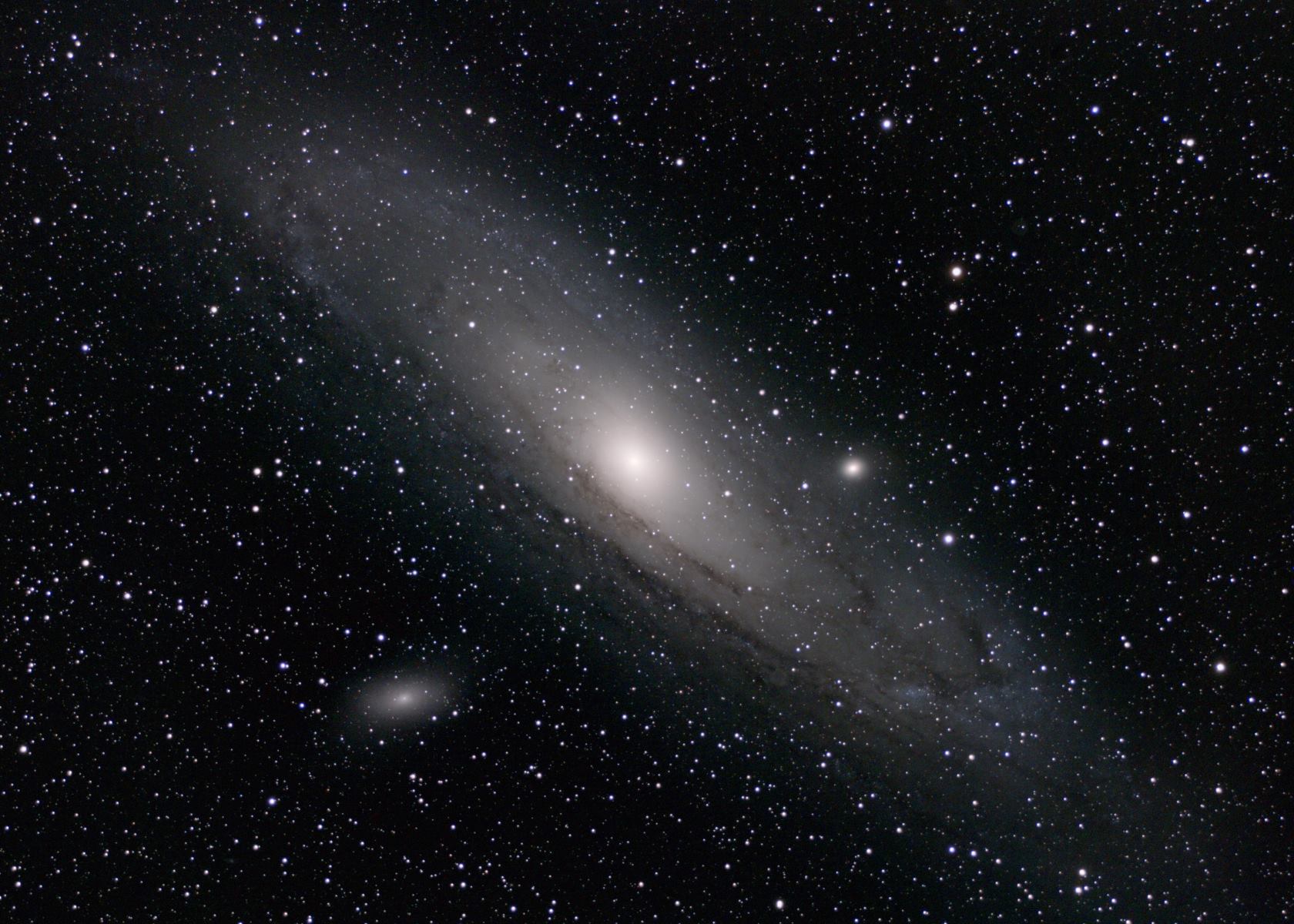
Andromeda is not just a galaxy far, far away; it's a cosmic neighbor with some mind-blowing secrets. Ever wondered what makes this galaxy so special? Andromeda is the closest spiral galaxy to our Milky Way, and it's on a collision course with us! Imagine two massive galaxies merging in a cosmic dance. But that's not all. This galaxy is home to a trillion stars, dwarfing our Milky Way's 200-400 billion. Andromeda also boasts a supermassive black hole at its center, millions of times the mass of our Sun. Ready to dive into more Andromeda facts? Buckle up for a stellar journey!
The Andromeda Galaxy: A Neighbor in Space
The Andromeda Galaxy, also known as M31, is our closest spiral galaxy neighbor. It's a fascinating subject for astronomers and space enthusiasts alike. Let's dive into some intriguing facts about this cosmic giant.
-
Largest Galaxy in the Local Group: Andromeda is the largest galaxy in the Local Group, which includes the Milky Way, the Triangulum Galaxy, and about 54 other smaller galaxies. Its sheer size makes it a significant object of study.
-
Distance from Earth: Andromeda is approximately 2.537 million light-years away from Earth. This distance is relatively close in cosmic terms, allowing astronomers to study it in great detail.
-
Contains a Trillion Stars: This galaxy is home to about one trillion stars, more than twice the number of stars in the Milky Way. This vast number of stars contributes to its brightness and visibility from Earth.
Andromeda's Structure and Composition
Understanding the structure and composition of Andromeda helps us learn more about our own galaxy and the universe.
-
Spiral Galaxy: Andromeda is a spiral galaxy, similar to the Milky Way. It has a central bulge surrounded by a flat, rotating disk of stars, gas, and dust, with spiral arms extending outward.
-
Supermassive Black Hole: At the center of Andromeda lies a supermassive black hole, much like the one at the center of the Milky Way. This black hole has a mass of about 140 million times that of the Sun.
-
Satellite Galaxies: Andromeda has several satellite galaxies, including M32 and M110. These smaller galaxies orbit Andromeda and are gravitationally bound to it.
Andromeda's Future and Its Impact on the Milky Way
The future of Andromeda is closely tied to the future of our own galaxy, the Milky Way.
-
Collision Course with the Milky Way: Andromeda is on a collision course with the Milky Way. In about 4.5 billion years, the two galaxies are expected to collide and merge, forming a new galaxy often referred to as "Milkomeda" or "Milkdromeda."
-
Blue Shift: Unlike most galaxies that are moving away from us, Andromeda is moving towards the Milky Way. This movement causes a blue shift in its light, indicating that it is approaching us.
Observing Andromeda from Earth
Observing Andromeda provides valuable insights into the nature of galaxies and the universe.
-
Visible to the Naked Eye: Andromeda is one of the few galaxies visible to the naked eye from Earth. On a clear night, away from city lights, it appears as a faint, fuzzy patch in the sky.
-
Best Time to View: The best time to view Andromeda is during the fall months in the Northern Hemisphere. It is located in the constellation Andromeda, which is high in the sky during this time.
-
First Recorded Observation: The first recorded observation of Andromeda was made by the Persian astronomer Abd al-Rahman al-Sufi in 964 AD. He described it as a "small cloud" in his Book of Fixed Stars.
Andromeda in Culture and History
Andromeda has not only scientific significance but also cultural and historical importance.
-
Named After a Myth: The galaxy is named after the princess Andromeda from Greek mythology. According to the myth, she was chained to a rock as a sacrifice to a sea monster but was saved by the hero Perseus.
-
Inspiration for Science Fiction: Andromeda has inspired numerous works of science fiction, including books, movies, and TV shows. Its mysterious nature and proximity to Earth make it a popular setting for intergalactic adventures.
-
Role in Understanding the Universe: Studying Andromeda has helped astronomers understand more about the structure and evolution of galaxies. Observations of Andromeda have provided insights into star formation, black holes, and the dynamics of galaxy mergers.
Final Thoughts on Andromeda
Andromeda, our neighboring galaxy, holds many fascinating facts. It's the largest galaxy in the Local Group, containing about one trillion stars. Andromeda is on a collision course with the Milky Way, set to merge in about 4.5 billion years. This galaxy is visible to the naked eye from Earth, appearing as a faint, fuzzy patch in the night sky. Andromeda's spiral structure and two satellite galaxies, M32 and M110, add to its intrigue. Scientists study Andromeda to understand galaxy formation and evolution. Its black hole, roughly 100 million times the mass of our Sun, is a key area of research. Andromeda's rich history and future make it a captivating subject for astronomers and space enthusiasts alike. Keep looking up; the universe has so much to offer!
Was this page helpful?
Our commitment to delivering trustworthy and engaging content is at the heart of what we do. Each fact on our site is contributed by real users like you, bringing a wealth of diverse insights and information. To ensure the highest standards of accuracy and reliability, our dedicated editors meticulously review each submission. This process guarantees that the facts we share are not only fascinating but also credible. Trust in our commitment to quality and authenticity as you explore and learn with us.


